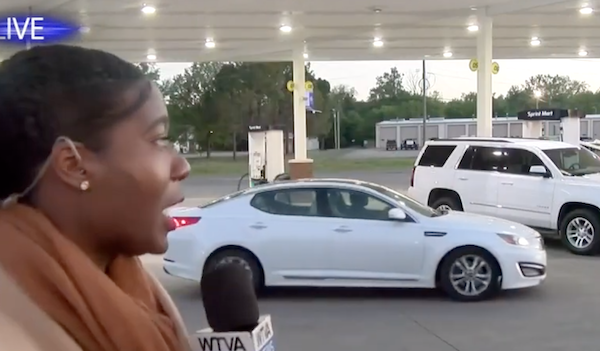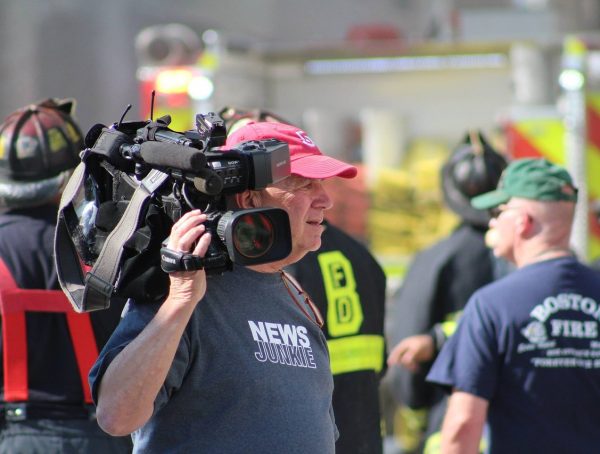By now you have probably seen the video of Tori Yorgey, a TV reporter for NBC affiliate WSAZ, getting hit by a car while she was reporting live on a water break in Dunbar, West Virginia. The scene lasts only a few minutes, where we can see the reporter and her camera mounted on a tripod get run over by a pickup truck. Yorgey immediately exclaims “I’m okay” and continues her stand up as she catches her breath.
This event has sparked a lot of debate within the journalism community, with many journalists being outraged the reporter was sent alone to do a live shot at nighttime, arguing that her news station totally disregarded her safety. Progressively, more than the safety of journalists while on the job, professionals started questioning the position of MMJs, or multimedia journalists, who are expected to be a “one-person team.”
“When talking about what happened with Tori, a lot of us have been completely outraged, because we all felt ourselves in that, in those moments, and I think it was a flashback of ‘I can’t believe I did that, it could have been me’ and I will say the MMJs now in 2022 are doing a lot more than I ever had to as an MMJ,” says Neeha Curtis, a veteran journalist and morning news anchor for Cleveland 19 News.
Due to budget restrictions and shrinking of newsrooms, multimedia journalists are now expected to work in several positions at the same time, such as editor, shooter, reporter, and live shot engineer.
“Outside of being safe, in terms of workflow, it’s more work on you as an MMJ. That word was created basically, that working title meaning you can take on multiple jobs in one,” explains Brittany Miller, former MMJ for WGXA, who works alone about 75% of the time.
MMJs also blame the pressure that is put on them, especially on live television.
“She was clearly in a trauma response. She was in shock … She was just started rambling, she is in so much shock physically in her body, in her mind… In that one moment, she just didn’t know what to do but kept going because that’s what we’re trained to do, we got to keep going, even if the world falls around you, you have to keep going. That is a toxic thing that we have learned to do working in TV news,” says Nicole Vowell, a former news reporter for KSL 5 TV.
What does that mean for young journalists? Management preaches a “tell us if you do not feel safe,” but for Curtis, this is not enough, since most young journalists do not dare to speak up because they are scared to speak up, especially when they are working their first job in the industry. What is the future of MMJs then? To Kris Betts, former anchor for 13WHAM ABC, this is a position that will not last if the workload given to these new journalists is not made more manageable.
“The biggest change I’d like to see is to go back to 1995, 2005 even, before MMJs became the thing because we have backpacks now and it’s cheaper and it’s easier, but we’re burning them out so there won’t be any anyways in 10 more years,” Betts says.
While the total disappearance of the MMJ position seems very unlikely, there are still measures newsrooms can take to ensure the safety of their reporters, such as pairing more photographs with MMJ, especially at night, and especially with women.
“I don’t like the idea of the MMJ role … There are so many elements you can’t control around you, people, cars, weather, just safety concerns. I’ve always thought that if it’s before 7 AM or if it’s after 9 PM, I think someone should always be with the reporter,” says Jared Oliver, former MMJ now sports anchor and reporter for WFTV.







